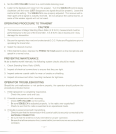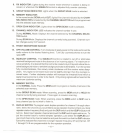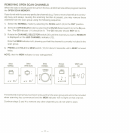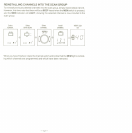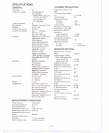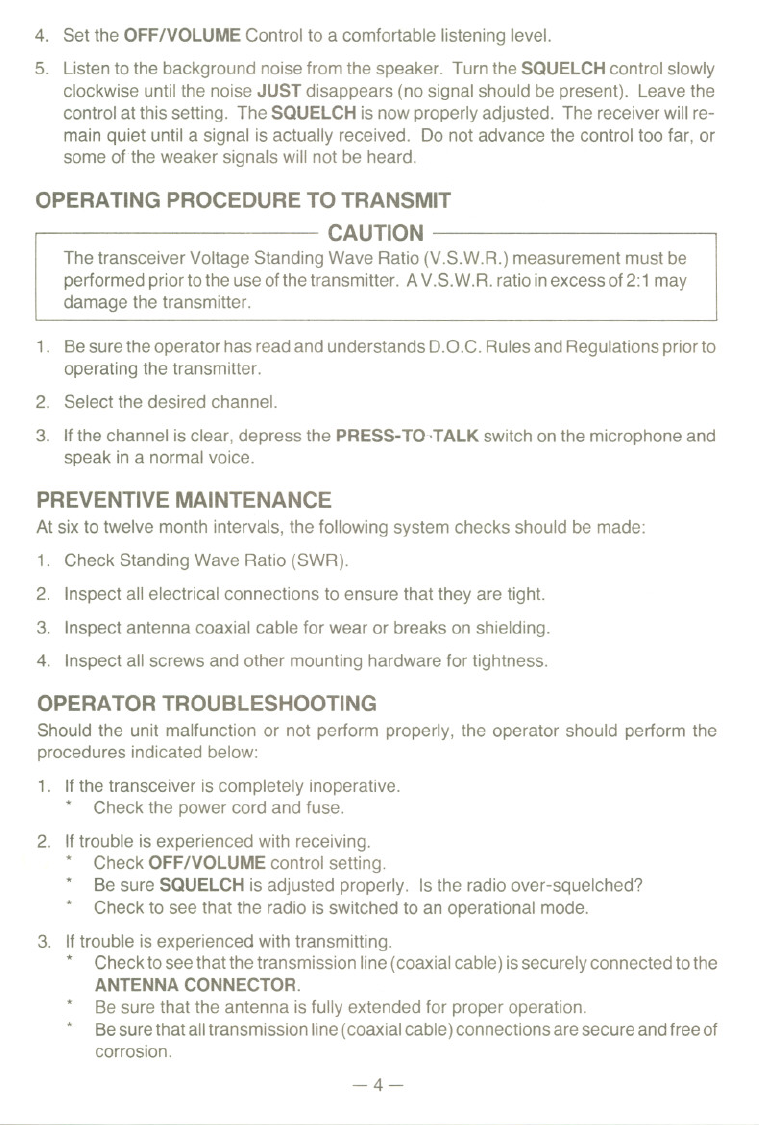
4. Set the OFF/VOLUME Control to a comfortable listening level.
5. Listen to the background noise from the speaker. Turn the SQUELCH control slowly
clockwise until the noise JUST disappears (no signal should be present). Leave the
control at this setting. The SQUELCH is now properly adjusted. The receiver will re-
main quiet until a signal is actually received. Do not advance the control too far, or
some of the weaker signals will not be heard.
OPERATING PROCEDURE TO TRANSMIT
CAUTION -
The transceiver Voltage Standing Wave Ratio (V.S.W.R.) measurement must be
performed prior to the use of the transmitter. A V.S.W.R. ratio in excess of 2:1 may
damage the transmitter.
1. Be sure the operator has read and understands D.G.C. Rules and Regulations prior to
operating the transmitter.
2. Select the desired channel.
3. If the channel is clear, depress the PRESS-TO' TALK switch on the microphone and
speak in a normal voice.
PREVENTIVE MAINTENANCE
At six to twelve month intervals, the following system checks should be made:
1. Check Standing Wave Ratio (SWR).
2. Inspect all electrical connections to ensure that they are tight.
3. Inspect antenna coaxial cable for wear or breaks on shielding.
4. Inspect all screws and other mounting hardware for tightness.
OPERATOR TROUBLESHOOTING
Should the unit malfunction or not perform properly, the operator should perform the
procedures indicated below:
1. If the transceiver is completely inoperative.
* Check the power cord and fuse.
2. If trouble is experienced with receiving.
* Check OFF/VOLUME control setting.
* Be sure SQUELCH is adjusted properly. Is the radio over-squelched?
* Check to see that the radio is switched to an operational mode.
3. If trouble is experienced with transmitting.
* Checktoseethat thetransmissionline(coaxialcable)issecurelyconnectedtothe
ANTENNACONNECTOR.
* Be sure that the antenna is fully extended for proper operation.
* Besurethatalltransmissionline(coaxialcable)connectionsaresecureandfree of
corrosion.
-4-






